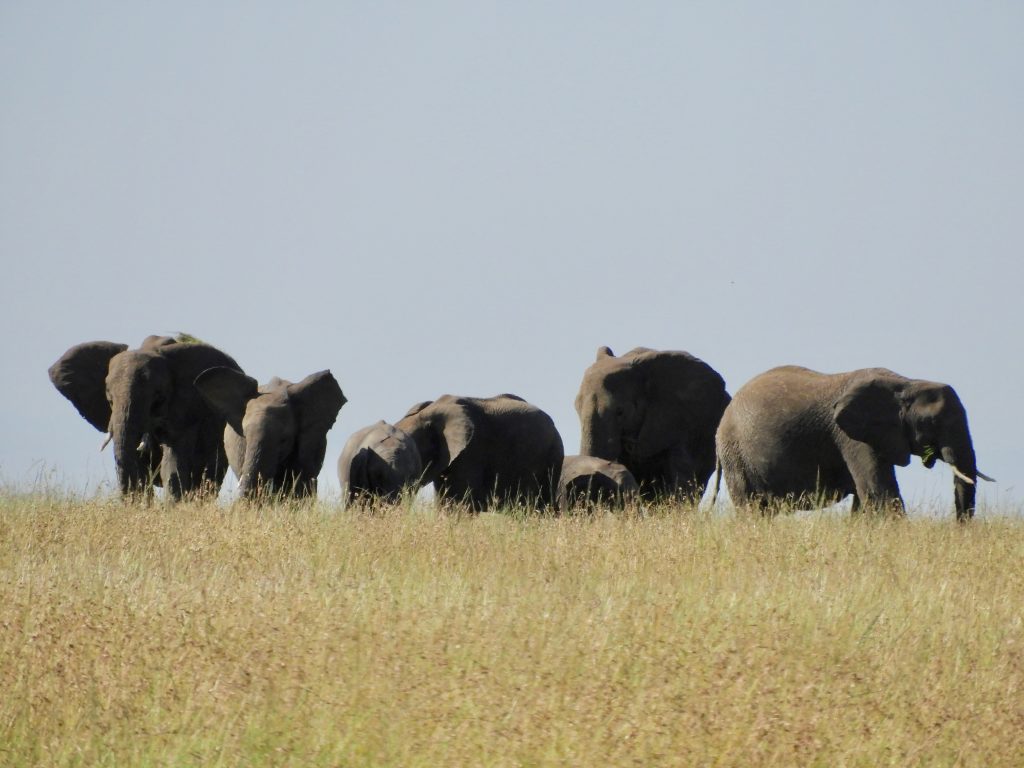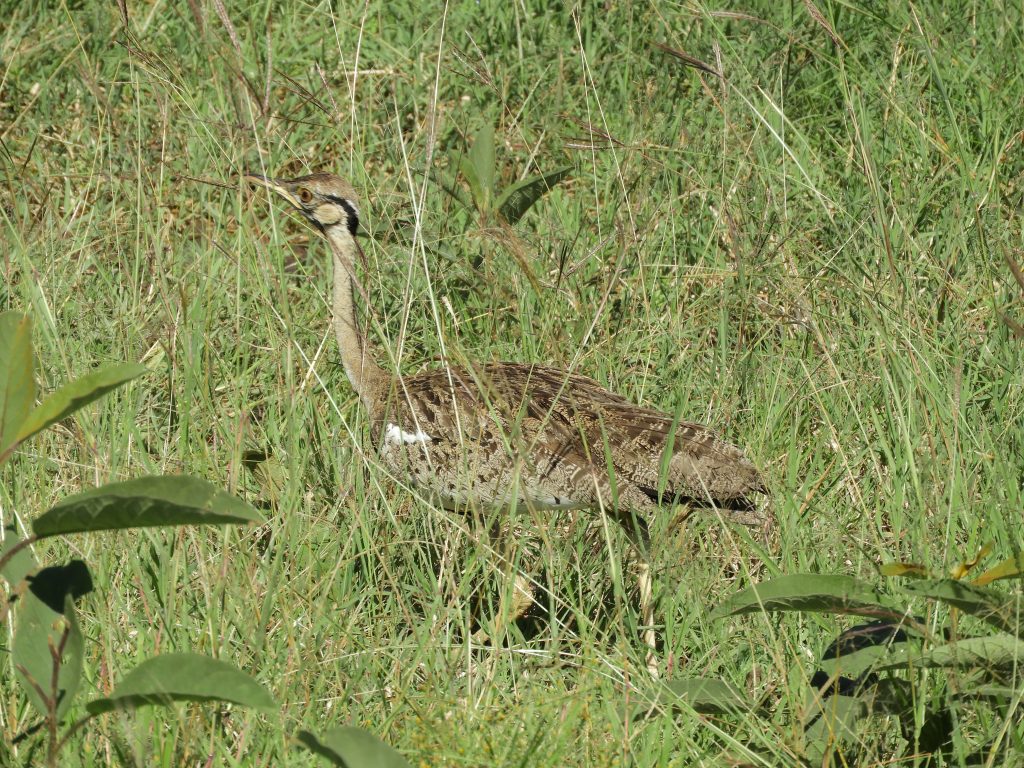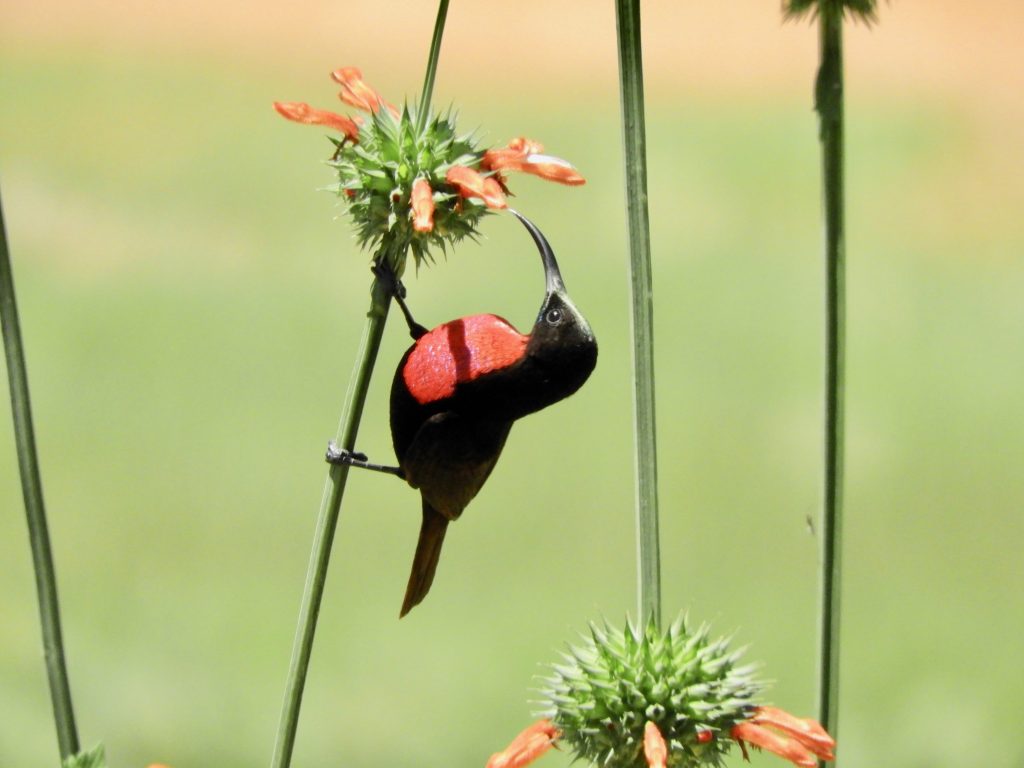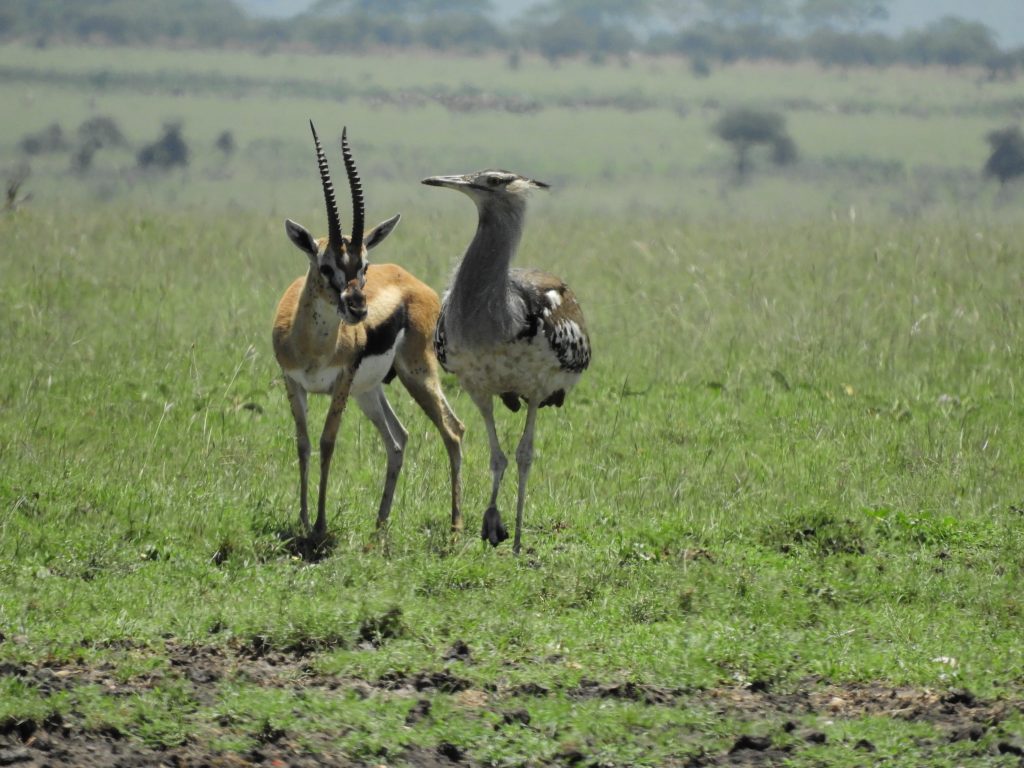
Enonkishu Conservancy, Kenya. February 12 2020. I think this one has to go in the ‘probable’ category. I had little faith in this long-distance photo of a large bird spotted in the morning haze. I might have deleted it until, on close examination, I fancied I could just make out a hint, just enough facial detail to spark a memory from a few years ago. A memory from February 2017 when I was in Uganda with a guide and we spotted this bird.

We could not for the life of us identify it despite long looks and this high quality photo for reference. Later that day we asked knowledgeable birding tour guide who quickly said ‘It’s a young Bateleur.” The clincher, he said, is the bare skin behind and around its beak, the only plausible conclusion; it was one of those lessons that sticks with you. I’ve seen adult Bateleurs since and they are unmistakable in flight, colour and under-wing patterning and are spectacular. The name comes from French, means street performer or tumbler, a reference to their teetering soaring flight; how picturesque.

Comparing the photo from three years ago with today’s and considering the overall size and posture I was able to persuade Alan, my ornithologist companion, to consider it a Bateleur. He went for it and even muttered ‘Good call”. Probably.











